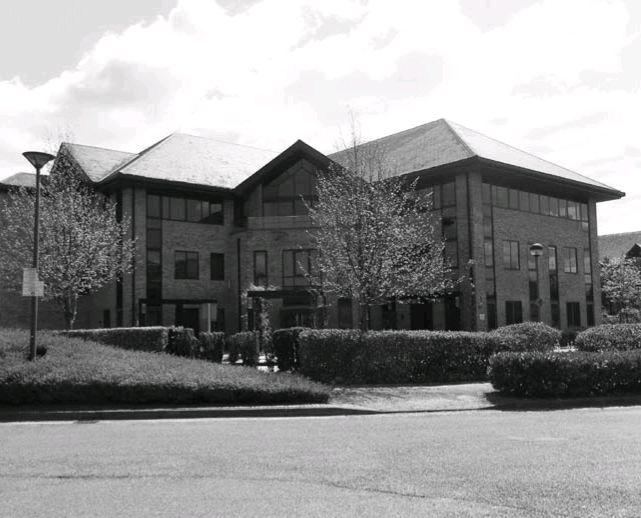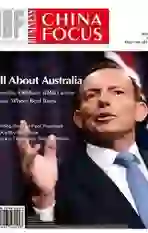Foreign Investors Come to China with Companions
2014-09-22
The business card of Zhang Shoucheng showed his two roles: a professor of physics at Stanford University and the initiating partner of Stanford Capital, a venture capital organization he and others founded last September in Silicon Valley.
Stanford Capital mainly invests in the most groundbreaking technologies and innovative business patterns. Zhang Shoucheng not only set up an office in Silicon, but also established a team in Beijing with the goal of helping the U.S. enterprises it invested to expand their business in China.
Generally speaking, a majority of foreign investment banks favor companies that are located and developing in China, but there are more and more cases like Stanford Capital.
Cross-border Investment
Many times, this pattern is not the best choice for foreign investment institutions. James Tsao, partner of Unites Capital (formerly known as JP Morgan Asia Investment Fund before 2008), said frankly that it was very hard to find a proper project to invest for a long while in the past. Most of the projects raised their capital through IPO and local RMB-based funds in China have more advantages than their foreign counterparts.
In addition, it was hard to acquire local investment companies because of either the reluctance of the target or the high price they asked for. However, they found that the overseas investment projects were usually rewarded with great business and the offer is relatively lower.
Therefore, Unites Capital adjusted its investment strategies. “We began to choose the management teams that pay close attention to China and other emerging economies and wait for future chances.”
Though Unites Capital considers itself an Asian investment organization, but not all its investment targets are located in Asia. Many of them are European or American entities. These projects share one feature – they are all somewhat related to China.
“In the past ten years, the investment into European and American projects was the most profitable business. We adapted their brands, channels, markets and supply chains to the Asian market,” James Tsao said.
Cai Mingpo, board chairman of Cathay Capital, spent years in studying in France and China. His experiences of carving out business and investment made him a loyal fan of the crossborder investment. He targets the investment opportunities brought by the international expansion of Chinese and French enterprises and their mutual cooperation.
According to the information provided by Cathay Capital, early in 2012, China Development Bank Corporation(CDBC), an organization under Chinas National Development Bank, and French National Development Bank(FNDB) set up a Sino-France Fund for SMESs with the total value of 150 million euros. Cathay Capital is appointed as the manager of this fund.
With the governmental support, Cathay Capital threw most of its investment into helping Chinese companies find French partners, introducing advanced technologies and experiences from France and expanding their business in France. On the other hand, it helped the French companies that it invested into to develop in the Chinese market and match them with excellent partners in this country.
By now, the fund has already finished five investment projects.
The Detoured Development through Local Resources
Taking advantage of local resources is the biggest appeal of cross-border investment. The 21-people investment team of Unites Capital has their tracks and offices in Hong Kong, Seoul and Shanghai. As James Tsao said, thanks to the local teams, many of its previous investment efforts could initiate important business in Asia, especially China.
An example he listed came from Edwards, a manufacturer of vacuum products and emission reduction sys- tem, as well as a service supplier for manufacturers of semi-conductors, panel displays, LED and PV batteries. It could grab 40% of the global market. Even though its largest plant used to be located in UK and employ over 4000 people, most of its products are sold in the Asian market.
James Tsao remembered that the global financial crisis arrived two years after his investment into Edwards, causiing the companys global orders to drop over 80%. At that time, Unites Capital made use of its resources in Asia and resolvedly moved 80% of its production force to Asia, saving the fixed cost of 100 million euros per year. Meanwhile, it put great efforts into the expansion in the Chinese market, increasing the companys business volume to 70 million pounds in 2011. According to James Tsao, this British company was entirely sold to a listed entity in North Europe and Unites Capital quitted entirely with the 300% investment returns.
HYVA from the Netherlands is another successful case. This company mainly produces the hydraulic cylinder for the heavy-load transportation devices. When Unites Capital initially contacted this company, they found that this company had businesses in the BRIC with 40% of them in China. Unites Capital moved the companys headquarters to Hong Kong immediately and took the strategy of collective purchasing. The cost control measures in the first phase saved the cost of about 15 million euros in the first year.
“Made in Asia and sold in Asia have become a trend, but many European and Asian companies were not prepared for this. For us, the advantages of being local could provide assistances for foreign companies in this matter. We can bridge them with the Asian, especially the Chinese market. After that we can help to find proper partners,” James Tsao said.
Similarly, Cathay Capitals limited partners (LP) included the institutional limited partners in France and China, enabling the fund to easily match and integrate the resources of the two countries. According to Cai Mingpo, last year, Cathay Capital invested into France-based Flexitallic Group, one of the leading manufacturers and retailers of industrial sealed-in equipment. Its main products target the emerging markets.
After throwing the investment, Cathay Capital also fixed the strategies of China for Flexitallic. Through the networks of Cathay Capital in China, Flexitallic initiated the negotiations with Chinas state-owned enterprises like China National Petroleum Corporation, China National Petrochemical Corporation, China General Nuclear Power Group and so on. Some of the negotiations have been reported with exiting progress. Meanwhile, Cathay Capital helped this Dutch company complete an important acquisition in the U.S. market that doubled the companys size in a short while.
According to Cai Mingpo, this project is going to be bought by a PE fund in Europe, allowing Cathay Capital to quit completely with full hands.
The successful cases and huge profits encouraged Cathay Capital to increase its investment. It is talking with Chinas National Development Bank and a French investment bank to set up a Sino-French fund for acquisitions. The size of the fund is estimated to be around 500 million euros. Presently, NBDC and its French counterpart have become the base investors of this fund, each of which contributed 100 million euros.
“This fund is going to focus its investment on the medium-sized enter- prises with cross-border development strategies and potential for internationalization. Meanwhile, the thinking pattern of making investment will not be the same as before,” Cai Mingpo said.
